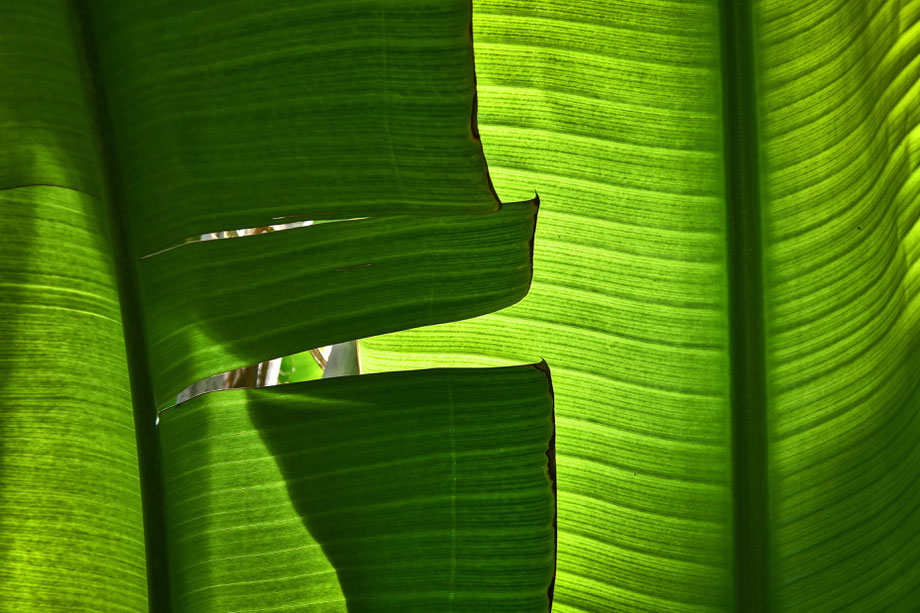Episode 2 of "The Tree as a Source of Inspiration: Biomimicry": Leaves and Solar Panels...
Can we really use leaves as solar panels? And what connection could possibly be made between leaves and solar panels, which are so different?
Leaves typically possess a texture and shape that maximize their exposure to light. There are various solar panels that specifically draw inspiration from the shape, pigment, and texture of leaves.
As a reminder:
Photosynthesis

As a reminder, photosynthesis is a process found in trees. It involves converting light energy into chemical energy.
It is essential for the survival of plants as well as for all ecosystems on Earth. It plays a crucial role in the carbon cycle by absorbing carbon dioxide and releasing the vital oxygen we need.
Solar panels
Solar panels, also known as photovoltaic modules, are devices that directly convert sunlight into electricity.
They are made up of photovoltaic cells that capture photons from sunlight, thereby generating a continuous electrical current.
Textured solar panels

By utilizing surface nanostructuring techniques, it is possible to recreate the rough texture of leaves on solar panels. This texture enhances internal light reflection, enabling better light absorption by the photovoltaic cells, while also distinguishing these solar panels from traditional models.
Internal light reflection of the leaf ?
When sunlight hits a textured solar panel, it undergoes multiple reflections within the microstructures of the surface, which increases the path length of light through the panel. This enables better light absorption by the photovoltaic cells.
As a result, it becomes easier to convert solar energy into electricity.
Surface nanostructuring technology ?
The surface nanostructuring technology used to mimic the texture of leaves relies on various methods, including :
- chemical etching,
- lithography,
- and the use of self-assembled nanostructured materials.
These methods are continuously evolving and contribute to enhancing the design and efficiency of these panels.
And currently ?
As of now, there is no concrete deployment of such solar panels, although the Swiss company "Insolight" has developed solar panels with a replicated texture through their "concentrator photovoltaics" project.
Similarly, researchers at Michigan have reproduced the texture of butterfly wings on their solar panels to increase their energy efficiency.
Overall, the concept of surface nanostructuring is present in these panels. Several universities, such as Cambridge and Stanford, are launching research projects on this subject..
Pigmented solar panels
What is chlorophyll ?
Chlorophyll, the green pigment found in plant cells, plays a vital role in photosynthesis.

What is its purpose ?
It absorbs light in the red and blue wavelengths of the light spectrum and reflects green light, giving the plant its characteristic color.
When light is absorbed, it triggers a reaction in the electrons present, leading to a chemical reaction that converts light energy into chemical energy.
Why is it important for the leaf ?
Chlorophyll aids in the plant's development by creating carbohydrates, such as glucose, from carbon dioxide and water. It is indeed a fundamental process in photosynthesis, and drawing inspiration from it seems reasonable.

And currently ?
Given the importance of chlorophyll in the plant development and photosynthesis process, it makes sense to develop solar panels inspired by it. Today, Michael Spencer and his team of researchers at the University of Surrey in the United Kingdom are attempting to develop panels inspired by this pigment. Previous attempts faced the challenge of the pigment losing its color over time.
However, Michael claims to have created a synthetic pigment that will retain its fluorescent color much longer than previous versions.
Leaf-shaped solar panels
Some researchers have chosen to draw inspiration from the structure of leaves rather than specific defining features. In
addition to their aesthetic appeal, these architectural structures harness solar energy.
What shape does a leaf have ?
Generally, a leaf is flat, thin, elongated, and flattened in shape.
Its narrow base is called the "petiole" which connects the leaf to the stem.
The main, broad part is referred to as the "blade" or "lamina."

There are multiple leaf shapes, such as:
- Oval
- Palmate
- Cordate
- Lanceolate
- Elliptical
These shapes can vary among different plants and even within the same plant.
Leaves adapt their shape according to their specific needs, such as for photosynthesis or evaporation.
And currently ?
Sustainably Minded Interactive Technology (SMIT) is developing the "Solar Ivy" project.
The designed panels resemble ivy, providing an aesthetic appearance similar to actual climbing vines on the walls of a beautiful house. Solar Ivy is lightweight and flexible, perfectly mimicking the characteristics of a leaf.
It is effortless to vertically mount it on a wall and extend it over a large surface area to enhance both the aesthetic effect and the solar energy capture area, thereby increasing electricity production.
The base of the leaves features a steel lattice, enabling them to be flexible and adapt to the wall's surface.
Each leaf is equipped with a thin solar panel, and there are three different types available based on customer needs.
As a general recommendation, around 500 solar ivy leaves are suggested for a residential home, generating approximately 250 watts of power.
Additionally, customers have the option to choose the color and shape of the leaves!



In conclusion
Solar panels play a crucial role in creating a more environmentally friendly future, and the more efficient they become, the more they will be utilized.
Once again, leaves have demonstrated their utility and ability to inspire new projects.
To be continued in the next episode...
In our series on "biomimicry."
Article provided and written by Clémence, from the Run for Planet team.
CLIQUEZ pour retrouver le profil professionnel de Clémence
!

























Écrire commentaire